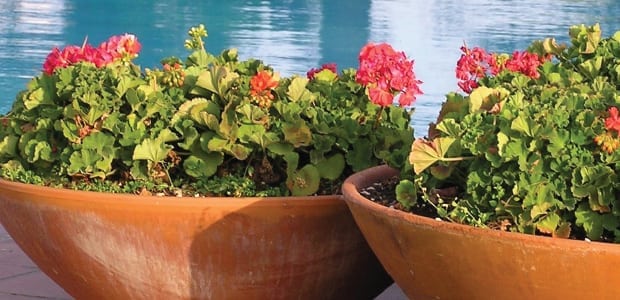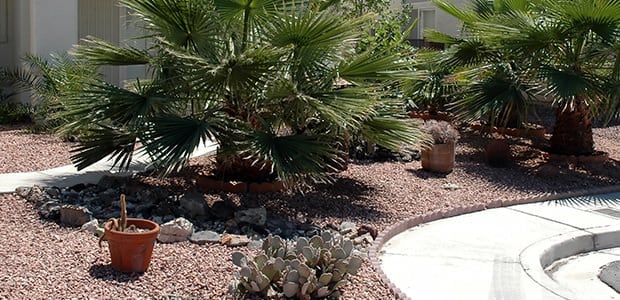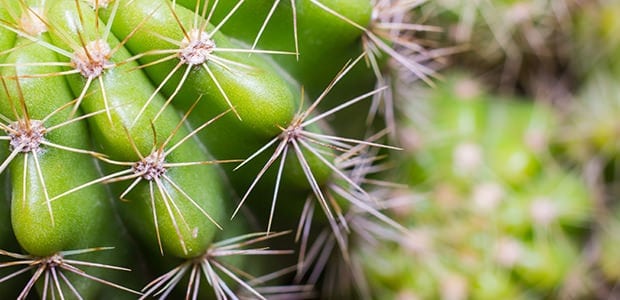Provided by
AAA Landscape
Successful Fall Flower Planting
Even if your summer flowers are still looking good, it’s time to start planning to change them out with cool season flowers for fall and winter color.
You may be hesitant to replace summer bloomers like periwinkle, zinnia, verbena, and portulaca that are still flowering, but if you wait too late into October to replace them, there won’t be enough time to get cool season flowers up and growing vigorously before the cold weather arrives in December. Late plantings of fall flowers just don’t perform as well as those planted earlier in the fall.
Some of the best cool season flowers for our valley are pansy, petunia, geranium, dwarf snapdragon, calendula, alyssum, lobelia, ageratum, and stock. Marigold and cosmos can be planted for fall color but will fade in the winter. Pansy and petunia are the most cold hardy and can tolerate temperatures down to 17 degrees F. If you’re looking for flowers that perform well in shady spots, geraniums, begonias, and impatiens are your best choices.
To prepare the flower bed, you start by mixing in lots of organic matter. Bagged compost, peat, composted manure, or potting soil can be used. Spread a 4 to 6 inch layer of organic matter over the areas to be planted and mix it 12 inches deep. At the same time, mix in a time-released fertilizer for flowering plants.
The most important component of successful fall flower planting is purchasing healthy, vigorous plants. How do you tell? First, buy from a plant store you trust, but always check each flower before purchasing it. Remove the flower plant from its pot and look at the roots. Don’t pull the plant out; just push it out from the base. Roots should be white or cream-colored, extending all the way around the sides and bottom. If patches of roots are black or gray you do not want that plant. Dark, slimy roots indicate the presence of a fungus disease that will eventually kill the plant, even though it appears healthy. Appearances can be deceptive!
At the time of planting, scratch the sides of the root ball with a fork, gently pulling the outer roots loose from the soil. This will encourage them to grow out into the planting soil faster. Immediately after planting, water the bed thoroughly. Continue watering daily. When plants become established, you can water less often but try to keep the soil evenly moist, not too wet or dry.
Finally, remember that many flowers will bloom more profusely if you remove the old flower blossoms as they fade. Geranium, calendula, marigold, cosmos, and stock fall into this category. Remove the flowers with sharp scissors or hand pruners. Pulling may only remove the petals and leave the flower embryo, allowing seeds to develop. It’s the formation of seeds that puts a damper on new flower production.
Ideal Time to Plant Trees
They say the best time to plant a tree was ten years ago and the second best time is now. September and October is the ideal time to plant trees in Arizona. Trees planted now have near ideal conditions in which to establish themselves. Cool temperatures and less intense sun means less stress on new plantings. Warm soil temperatures encourage root growth well into November. This is especially important for the success of new trees.
Avoid purchasing trees that have had all their lower limbs removed. Half of the tree’s branches should originate on the lower two-thirds of the trunk. Select trees with trunks that have a gradual taper. The lower trunk should be thicker than the upper trunk. This is a good indication of trunk strength. If the stakes are removed, the tree should be able to stand on its own.
Trees must be planted at the right depth and receive the right amount of water if they are to establish themselves and flourish. Planting too deeply is the most common reason why trees fail. Close behind is under watering, particularly when trees are young.
Dig a planting hole no deeper than the root ball. This is to prevent the tree from sinking in the hole caused by the loosened soil in the bottom of the hole settling. Tree settling often results in the tree’s death because soil fills in around and over the base of the trunk causing crown and root rot. This damage can develop within months of planting. In well drained soil, you want to locate the top-most roots in the root ball so that they will be level with the soil surface. Check to be sure that there is not an excess layer of soil already covering the root ball. As little as half and inch of excess soil over the root bell can inhibit or prevent water and oxygen from entering the root ball. Only mulch should be placed over the root ball.
You will want to water the tree daily during the initial establishment period. After two or three weeks the days between watering can gradually be increased. By late autumn trees should be receiving two to three waterings weekly. In winter when temperatures are cool, one watering per week should be sufficient. Once established, usually one year after planting, desert adapted trees such as mesquite will need little or no supplemental irrigation. Desert tolerant trees such as live oak and Arizona ash will continue to require some regular watering.








